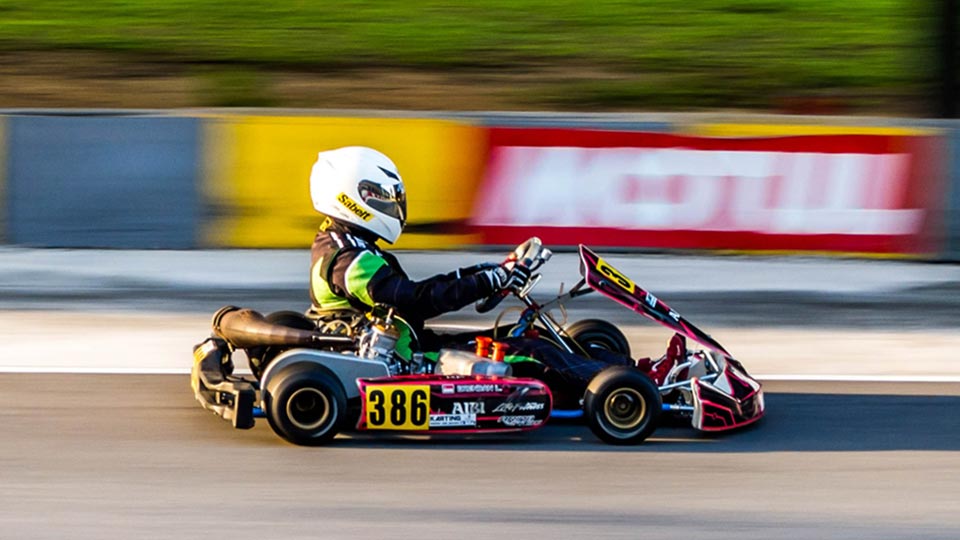I’ve been getting quite a few messages and emails from people who would like some help with fixing their go-kart acceleration problems. It’s been mentioned that their go-kart sluggishly accelerates or gives jerky acceleration as they step on the gas pedal.
So I wanted to address this with a guide that focuses on fixing inconsistent go-kart acceleration. There are several reasons why this can happen. Go-kart acceleration problems mainly occur because of the following reasons:
- Clogged carburetor
- Transmission issues
- Engine problems
- Incorrect throttle installations
- Binding brakes
- Faulty bearings
I also want to point out that this guide is meant for gas-powered go-karts, as we know that electric go-karts don’t have these types of components. Alright, let’s jump right in!
Solutions For Fixing Go-Kart Acceleration Problems
There are a variety of mechanical issues that can cause your go-kart to not accelerate smoothly. I will discuss various problems that could potentially cause this and also provide you with some possible solutions to fix this.
1. Clogged Carburetor
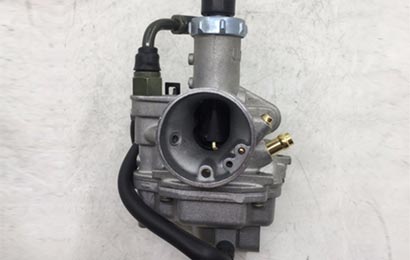
Quick Summary:
- Detach carburetor and drain fuel out
- Clean main and pilot jet
- Adjust carburetor if required
- Replace carburetor parts if damaged
One of the more common reasons for go-kart acceleration problems is the result of a clogged or damaged carburetor. Therefore, you should check if your carb is running optimally. The carburetor is responsible for mixing a proper air to fuel ratio before the flows into the engine. A carb contains many tiny valves and jets.
As a result, these jets can often get clogged, especially when you haven’t changed your fuel filter in a while, due to impurities in the fuel passing through. This usually happens with the main and pilot jet. Let’s take a look at how we can fix this!
How to Fix It:
For a clogged carburetor, you will have to drain out the fuel and use a carburetor cleaner on its interior surface. You should clean the main and pilot jet, as impurities in the fuel can cause a clog. This will ensure that fuel and air flows consistently to the engine.
Next, check if the carburetor needs an adjustment. Use your flat head screwdriver on the adjustment screw of the carb, turn the screw all the way in until it has completely stopped. Do this gently so it won’t snap. Now turn the screw out two and a half times, not one or two or three times. The turns will be enough for your go-kart to run smoothly.
This is for carburetors that need adjustments. If your carburetor is entirely worn-out, damaged, or aged, it’s best that you replace the entire unit. Go-kart carburetors are relatively affordable and can be easily swapped out.
More Information: Fixing Carburetors That Have a Gas Leak
2. Transmission Issues
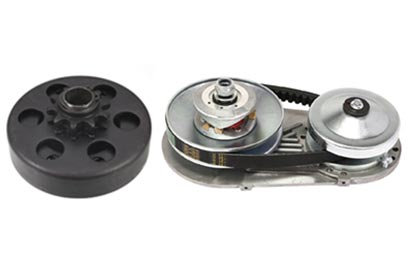
Quick Summary:
- Clutch: Remove from go-kart and inspect for damage. Replace components or clutch if required.
- Torque Converter: Inspect if belt and pulleys are running optimally, replace any damaged parts.
Your go-kart’s transmission could also be at fault. If you’re using a clutch, you should check if it’s worn, stuck or damaged. On the other hand, if you’re using a torque converter, you should check if the belt is slipping, that there is enough lubrication and that the pulley system is working properly.
These components are regularly exposed to high friction and temperature, which could lead to a worn-out clutch or failed torque converter. All of these issues could cause go-kart acceleration problems.
How to Fix It:
If your go-kart is operating on a centrifugal clutch, detach it from the crankshaft and remove the outer casing by removing the snap ring. Once open, check thoroughly if the inner components such as the spring, brake shoes and the friction materials are in good shape. If not, replace the broken parts or install a new clutch.
If you’re using a torque converter, observe your drive belt and see if it runs smoothly or if it’s perhaps worn out. You should also check for belt lubrication and ensure that the belt is the right size. Any misalignments or worn parts can cause sluggish or jerky acceleration. Remove any damaged parts and replace them with working parts.
3. Engine Problems
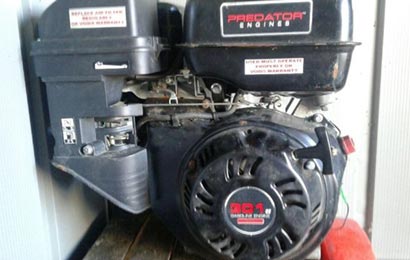
Quick Summary:
- Check for engine noises, overheating issues and inconsistent output (rpm)
- Inspect ignition switch, pistons and cables
- Get help from a mechanic if required
The engine is one of the most essential parts of your kart, so any issues with it can cause acceleration problems and other adverse effects. Overheating issues, engine noises, or inconsistent output can signify that something is wrong with your go-kart engine, which needs to be checked out immediately.
Engine problems might be due to a worn out ignition switch, piston issues, misalignments, faulty components and many more.
How to Fix It:
To fix the engine problems, you will need to replace all damaged components, based on your manufacturer’s guide. Not all parts need replacement and it can be hard to identify. You can clean or repair some parts, in order to return it to full functionality.
The actual cause of the engine problem will determine which repair approach to take. If you aren’t familiar with two-stroke engines and how they operate, I highly suggest that you get it looked at by a mechanic who will most likely be able to find the root cause and fix it for you.
4. Throttle Cables Not Properly Installed
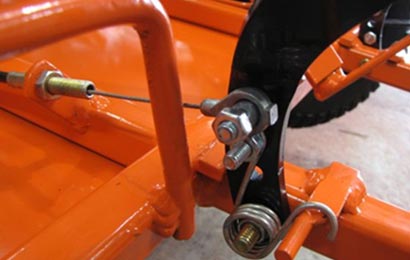
Quick Summary:
- Feed cables through housing
- Ensure firm tension (not too firm or loose)
- Check for throttle response
- Check cables for tension and damage
Throttle cables are regarded as rather simple components of your go-kart, but if they are faulty or installed wrongly, they can prevent your kart from accelerating smoothly. You should know that rusted, worn, or damaged throttle cables can cause poor engine response, giving you go-kart acceleration problems such as jerks or delayed acceleration.
Installing your throttle cables incorrectly can also cause similar effects which will be noticeable when you start pushing down the gas pedal. Therefore, you should inspect all of the cables to ensure that they are working as intended.
How to Fix It:
Installing your throttle cables the right way can be pretty straightforward. You need first to remove the jam nuts and fix your throttle cable housing to its frame. Ensure your throttle pedal is placed against the back-pedal. Drag your throttle cables towards the back of your go-kart until you notice resistance, then stop pulling. You need to fix cable housing in this position and tighten your frame with the jam nuts at the front.
You should not pull your throttle cable past the point at which you experience resistance because this can engage your engine throttle while your pedal is still in the idle position. The cable tension should be relatively firm; not too tight or too loose.
Now that your cables are properly adjusted. Tighten both your front and back jam nuts and ensure your engine throttle is in the idle position and your pedal is placed against your rear stop. Also check for apparent damage to your cables and see if you get a better response. Cables can wear out over time so it’s good to check the tension from time to time.
5. Binding Brakes
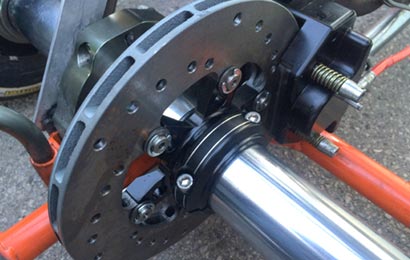
Quick Summary:
- Disc Brakes: Check calipers
- Drum Brakes: Check friction material
- Band Brakes: Check band condition
Irrespective of the type of brakes your kart is equipped with, popular reasons for brakes binding are faulty brake shoes, damaged brake hoses, binding caliper pins or excessive rust in brake components.
Brake binding happens when your brakes are unable to release properly. This means that during acceleration, your brakes are engaged when they shouldn’t be. This can happen with disc, drum or bands brakes. If your kart brakes cannot disengage properly, your go-kart will definitely not experience smooth acceleration.
How To Fix It:
Binding disc brakes are mostly a result of rusty or damaged brake calipers. So when you have been able to spot out damage, you can replace your calipers with new ones. Simply remove the disk brakes with care and ensure that you exchange all of the parts that are worn or damaged.
For drum brakes, open the outer shell and see if there are any components that are stuck or damaged. Sometimes the friction material is stuck to the outer shell. You should similarly replace them. If you have a homemade go-kart with band brakes, ensure that the band is in good condition and is not binding against any of the components.
More Information: Fixing Go-Kart Brakes
6. Faulty Bearings
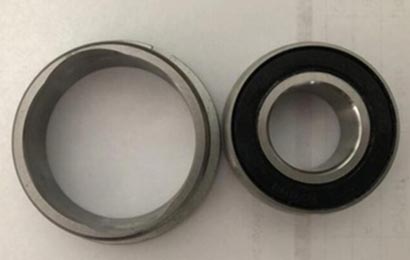
Quick Summary:
- Locate damaged bearing
- Remove front/rear bearing with a rod
- Insert a new bearing
- Secure with a soft-faced hammer
When your kart has a faulty bearing, you will start experiencing grinding noises, which will increase while accelerating or making turns. Faulty bearings make driving the kart very uncomfortable and you’ll most likely be able to see from which bearing it’s coming from.
Poor road conditions, faulty installations, kart modifications or regular wear can cause bearings to fail. This could also lead to your kart several acceleration problems that need immediate attention, as driving your kart with faulty bearings should not be considered an option.
How to Fix It:
The best and easiest way to solve a faulty bearing is to get it replaced with a new one. It’s a pretty straightforward process to replace go-kart bearings, but you need to be extremely careful during the replacement process.
You should note that go-kart bearings have different locations in the front than the back. The front bearings are located in the wheel hub, as they are connected to the spindles. The bearings at the rear are located inside the pillow blocks with the rear axle passing through.
This means that you’ll have to remove the wheel hubs for replacing the front bearings. Pull them out with a rod and place the new ones back in with a soft-faced hammer and some cushioning. You’ll need to remove the rear axle when replacing the bearings at the rear. Similarly, you can remove the bearings with a rod and knock them in again with a padded hammer.
Conclusion
I hope that this guide was useful to you and that it will help you fix your go-kart acceleration problems. The best is to first inspect your go-kart thoroughly, the moment that you experience sluggish, jerky or inconsistent acceleration.
If you’re able to hear unusual noises from components such as the engine, brakes, transmission or bearings you’ll know where to look first. Please be careful when disassembling certain parts and if you need help it never hurts to get a second opinion from a mechanic!
